Among the types of Hue's imperial architectural decoration arts, porcelain mosaic has the leading role and position in creating a typical appearance of the Nguyen dynasty's imperial architecture. Representing this art trend is Khai Dinh’s Tomb, a masterpiece of porcelain mosaic art in Hue.
Khai Dinh's tomb is a unique architectural work which shows Hue's renowned porcelain mosaic art.
Also known as Ung Lang, it is the tomb of the 12th King of the Nguyen dynasty (1885 - 1925) located on Chau Chu mountain outside Hue Citadel. The tomb currently belongs to Thuy Bang commune, Huong Thuy.
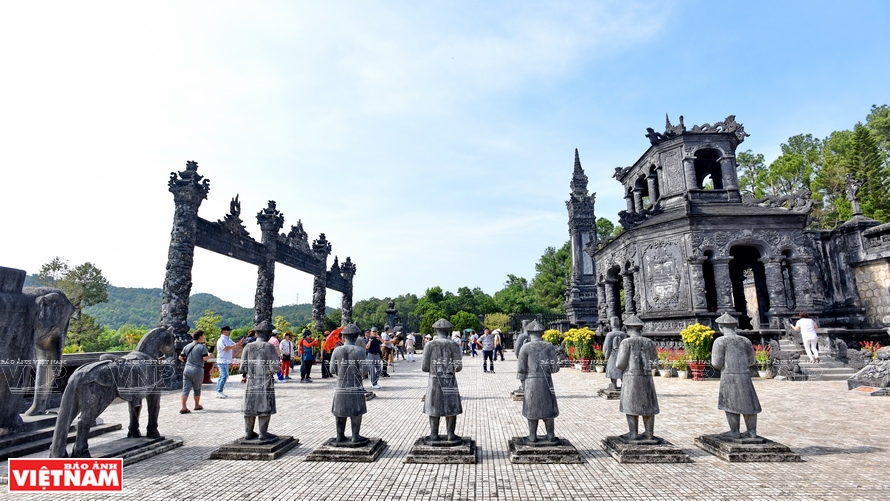
In front of Khai Dinh’s tomb.
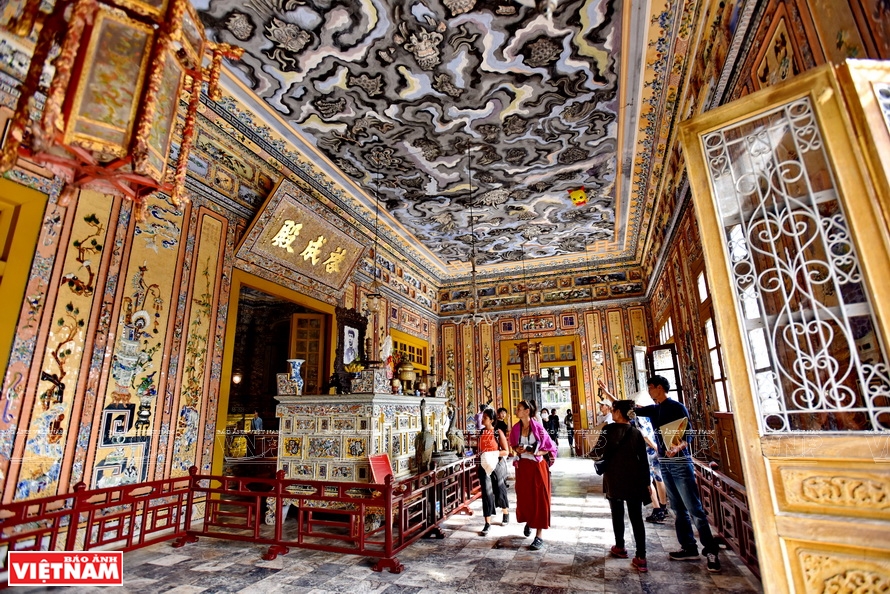
Visitors are interested in artworks at Khai Dinh's tomb.
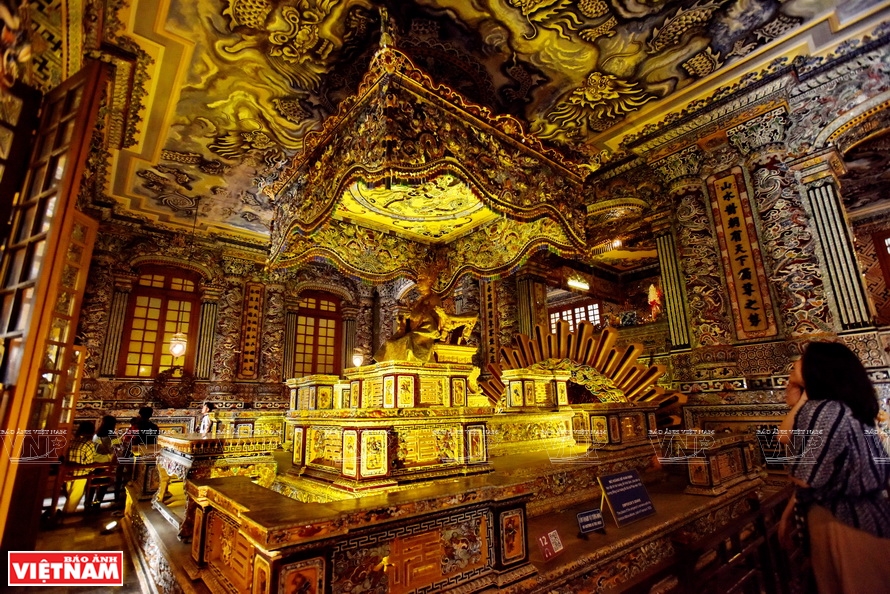
The porcelain mosaic masterpiece at Khai Dinh’s tomb looks brilliant in the light.
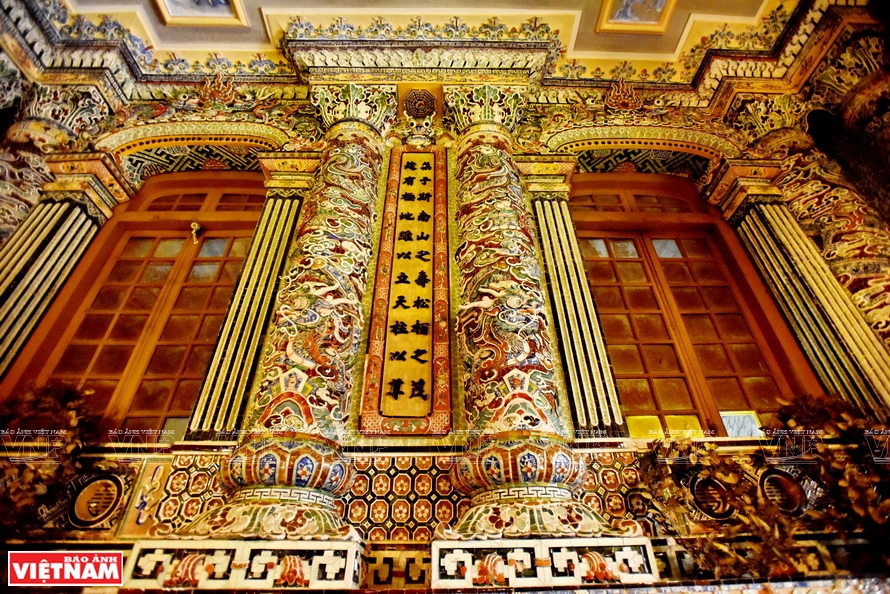
Delicate patterns of porcelain mosaic at Khai Dinh’s tomb.
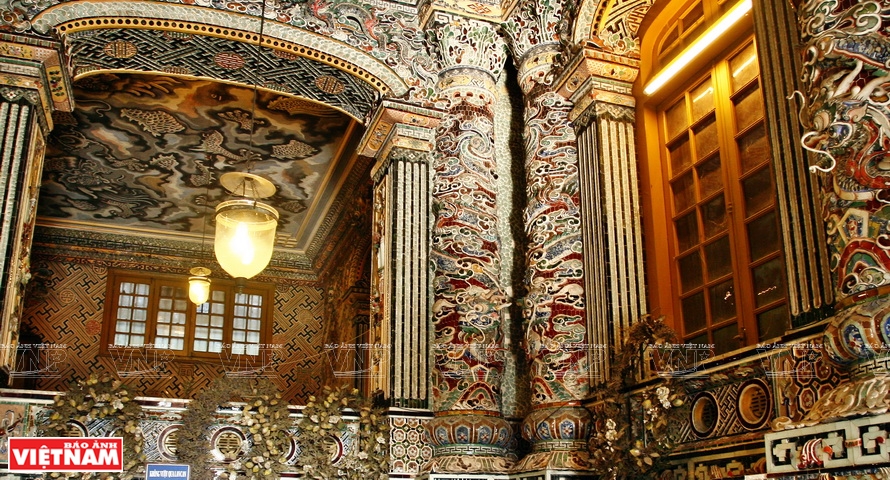
Great combination of delicate patterns and colors. |
The tomb's construction started on September 4, 1920 and was completed 11 years later by the late King’s successor Bao Dai. Compared to the tombs of the previous kings, Khai Dinh’s tomb has a more modest area, only 117m long and 48.5m wide, but it is the most elaborately constructed project and took the most effort and money.
Khai Dinh’s tomb was constructed in a modern way with cement, iron, steel, and many rare and precious things bought from France, China, and Japan. However, the special feature that made the unique value of Khai Dinh’s tomb is in the inner palace where the art of porcelain mosaic art was displayed.
Through the talented hands of Hue artisans, colorful porcelain and glass pieces taken from cups, bowls, vases and bottles were carefully cut and assembled into beautiful paintings, reliefs, pictures of birds, flowers, and animals based on Confucious, Taoist, Buddhist stories and folk motifs.
In addition to the large altar which was inlaid entirely with porcelain, the tomb-inside parasol covering the bronze statue of King Khai Dinh is truly a masterpiece of mosaic art. The entire parasol is a concrete cemented block weighing nearly 1 ton, but the exquisite mosaic art makes visitors feel like it was made of silky velvet with soft lines which were elegant and vivid like it could move in the wind.
Porcelain mosaic art was renowned in Hue imperial architecture decoration. The craft started around the 17th century and flourished from the late 19th century to the early 20th century, according to Dr Phan Thanh Hai, Director of Thua Thien Hue Department of Culture and Sports.
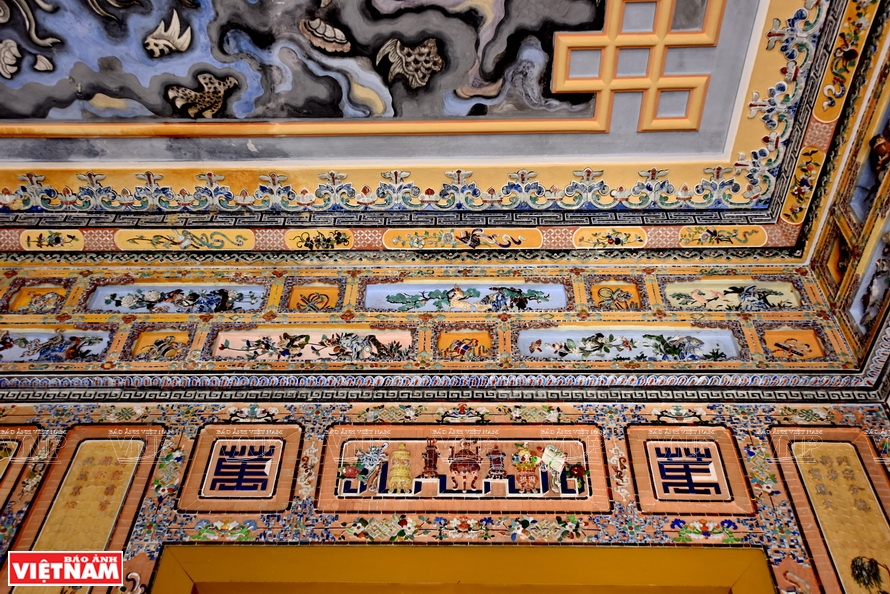
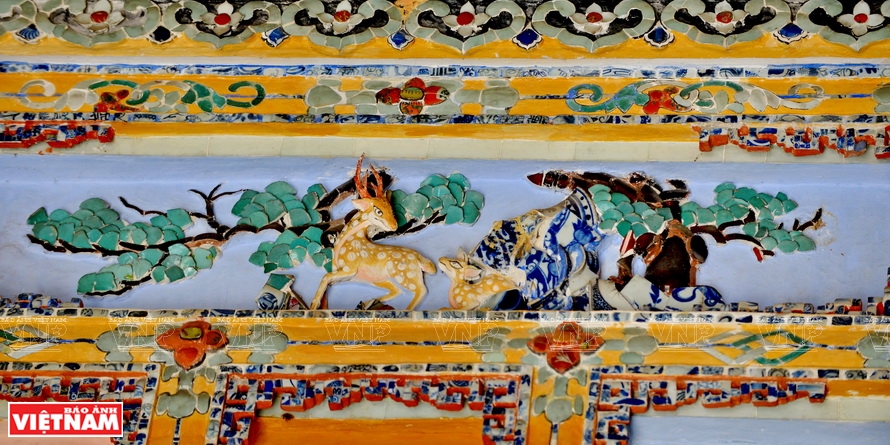
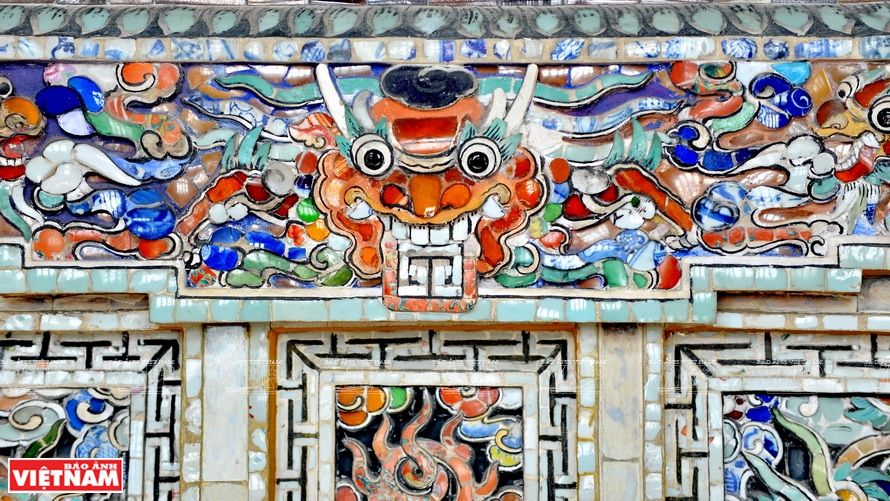
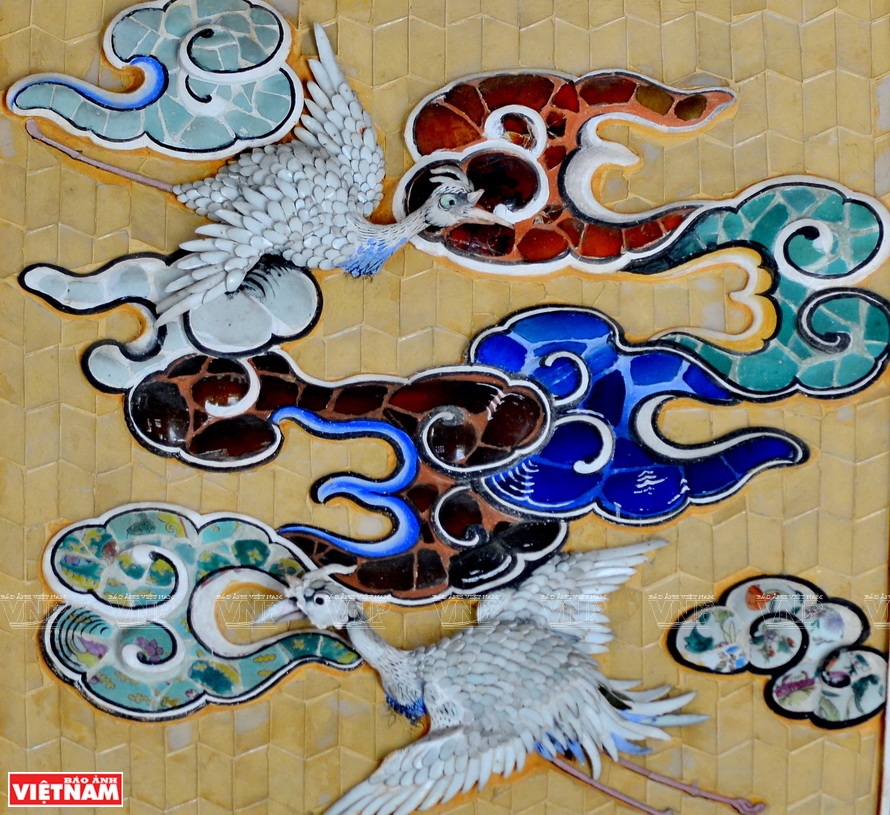

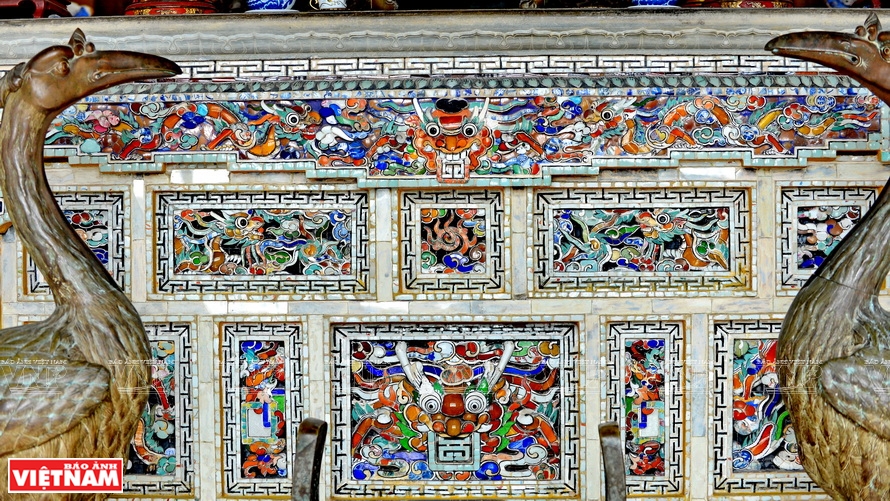

Works of porcelain mosaic art in the traditional style. |
By Thanh Hoa